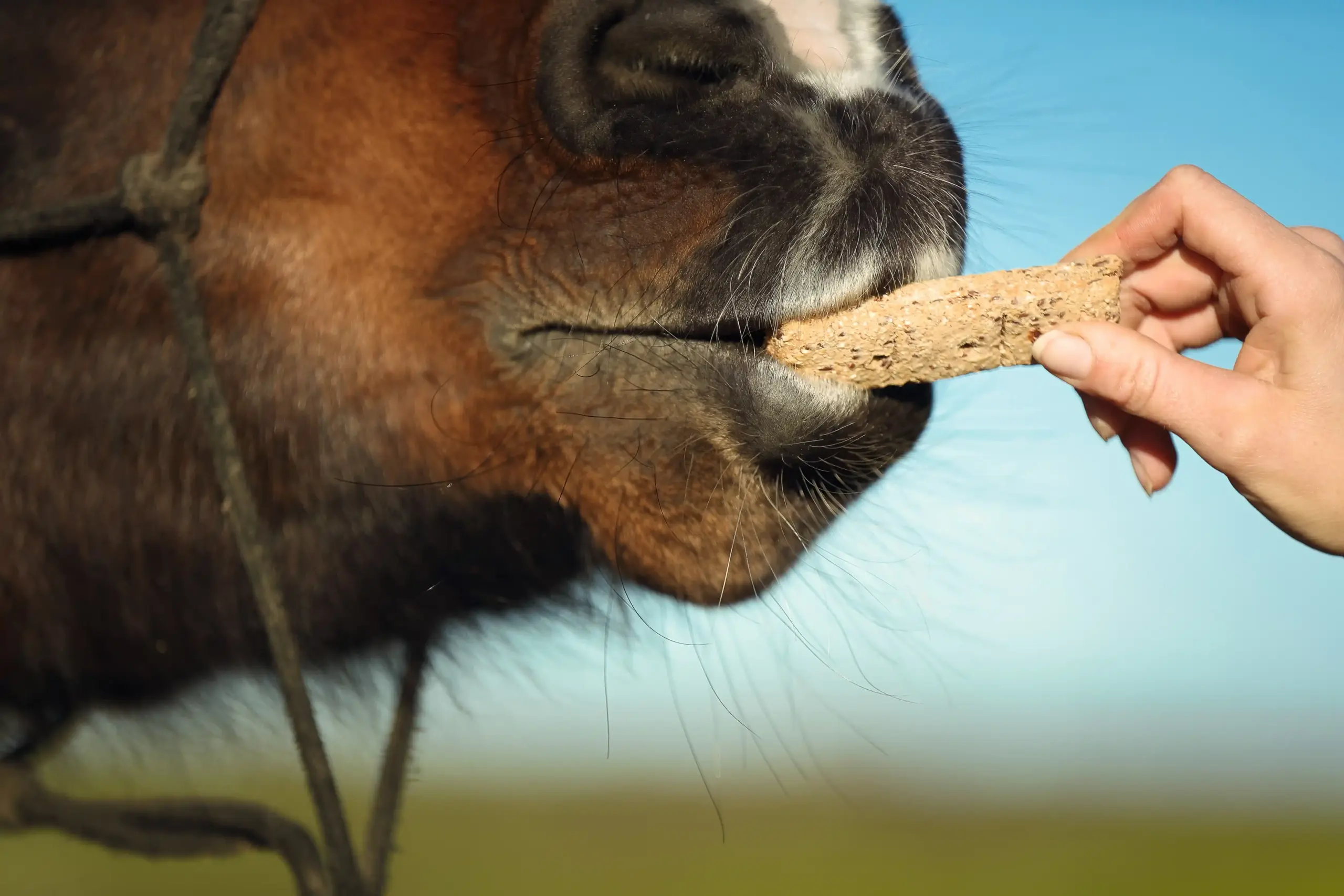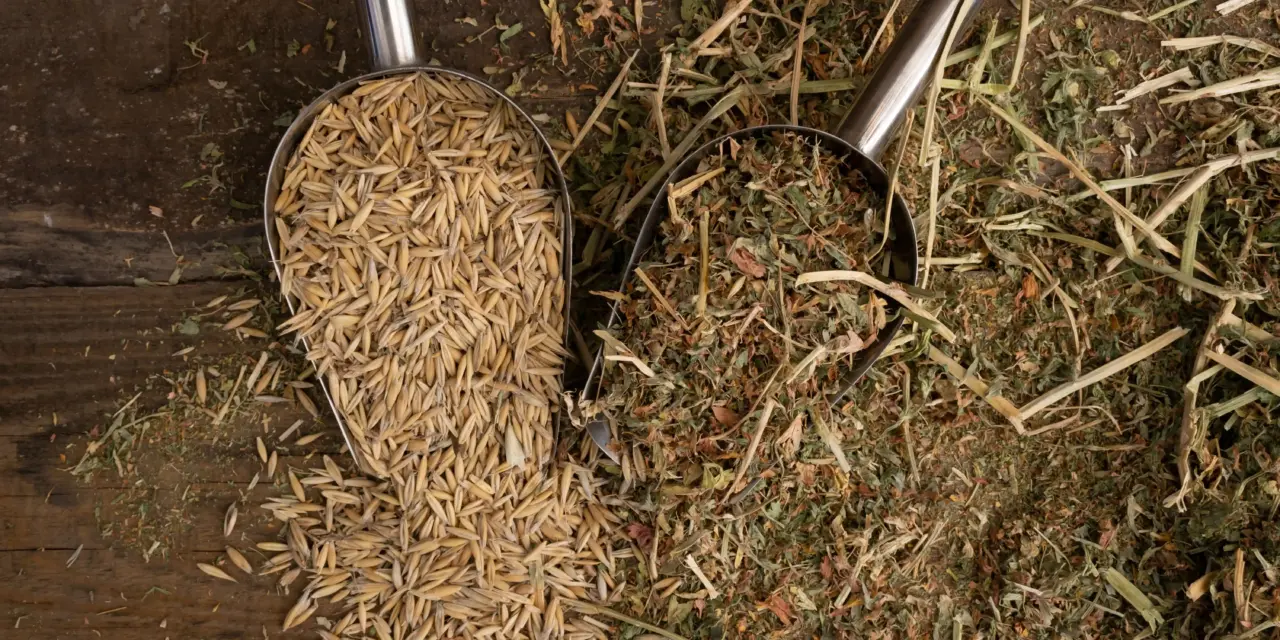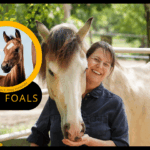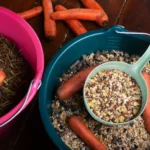Seeing through marketing tricks and making the best choice for your horse
Key Points at a Glance
- Be sceptical of buzzwords: terms like “premium,” “natural,” or “traditional” aren’t regulated and don’t guarantee quality
- Weigh up value for money: a higher price doesn’t always mean better quality – but the cheapest option is usually the most problematic
- Spot the red flags: steer clear of exaggerated claims, vague ingredient lists, and “miracle cure” promises
- Reward transparency: choose manufacturers who provide full declarations and clear explanations
- Buy to suit your horse’s needs: even the best feed is useless if it doesn’t match your horse
- Test in small amounts: always try new feeds in small bags first
- Think long term: good feed saves on vet bills and keeps horses happier.
In the minefield of feed options – with their confusing claims, compositions, additives, and analysis figures – horse owners need a few clear pointers to help them choose the right product. How do you spot the genuine gems and avoid the costly traps? How can you separate true quality from clever marketing? We’ve brought together the key insights and a practical guide to help you make confident, informed decisions.
Seeing through marketing myths
The power of words
Feed manufacturers are masters at using suggestive terms that imply quality and naturalness without being legally defined. These words cost nothing to use, yet they can drive up the selling price considerably.
- “Premium” and “high-quality”
are not protected terms and can be used freely. A so-called premium feed made from low-grade cereal by-products is still low-grade – the only thing that tends to be premium is the price. - “Natural” and “traditional”
may sound appealing, but in modern feed production they’re often misleading. Once grains are heat-processed, oilseeds pressed, or by-products from the food industry included, the result is no longer “natural” in the original sense. And if you’ve ever seen the factories where tonnes of feed are now mixed and packaged fully automatically, you will know it has very little to do with the “traditional” methods of our ancestors. True naturalness is what wild horses eat – everything else is processing.
- “Without artificial additives”
can be problematic if it means essential vitamins or minerals are missing. Often the phrase is only meant to suggest the absence of preservatives, flavourings, or colourings – so it’s always worth checking the label to understand what’s really inside.
Recognising emotional manipulation
“Nostalgia marketing” uses phrases like “grandma’s recipe,” “traditional mix,” or “time-tested formula.” What’s often forgotten is that in the past – especially during wartime or famine – horses were frequently poorly nourished and had a much shorter life expectancy than they do today. The appeal to “the good old days,” however, taps into the subconscious longing many people have for a simpler, more natural way of life – something they are keen to pass on to their beloved horse.
“Science marketing” relies on complicated terms and pseudo-scientific explanations to give the impression of expertise. Phrases like “revolutionary amino acid matrix” or “synergistic active complexes” sound impressive, as do references to “scientific studies” supposedly proving the effect. Yet on closer inspection, these studies often don’t exist at all, turn out to be manufacturer-funded vanity projects, or actually say something quite different from the marketing claims. Much of what sounds clever at first glance reveals itself, under scrutiny, to be little more than empty jargon.
“Problem marketing” works by inventing or exaggerating problems: “Is your horse really getting enough of nutrient XY?” – “Warning, deficiency symptoms!” – “9 out of 10 horses suffer from …” – followed, conveniently, by the product that claims to solve it. In reality, healthy horses on a balanced basic diet rarely suffer from dramatic deficiencies. Good hay, summer turnout, a proper mineral supplement, fresh water, and a salt lick generally provide everything a horse needs.
Valuing cost versus quality
Why cheap often ends up expensive
Producers of very cheap horse feeds can only achieve their low prices by compromising on ingredients. Collective terms instead of clearly named feed materials, by-products instead of grains, fillers instead of valuable components – the savings have to come from somewhere. The real costs often only become apparent later: larger daily amounts needed because of low nutrient density, extra supplements to make up for deficiencies, and in many cases high long-term veterinary and treatment bills caused by nutrition-related problems.
Real value versus perceived value
A feed that costs 50% more but requires only half the amount is, in the end, cheaper. Concentrated, high-quality feeds often work in smaller portions and are therefore more economical in practice. That’s why you shouldn’t just look at the price per kilo, but at the cost per horse per day. The recommended feeding amounts are a good indicator: if 2–3 kg per day are advised, the feed is low in concentration and often bulked out with fillers. If 150–500g per day are sufficient, it’s a concentrated product with a high nutrient density.
Hidden cost drivers
Large bags may look attractive with their lower price per kilo, but they quickly become a problem if the feed isn’t tolerated, the horse refuses to eat it, or it spoils. A 25 kg sack of unusable feed is far more expensive than a 5 kg sack of good-quality feed that suits (and appeals to) your horse. Especially given that storage conditions in many yards are less than ideal (dampness, mice, moths …), it’s worth thinking carefully about how much you can realistically use in a given time. Cheap per kilo, but half the bag thrown away due to mould, works out costly in the end.
Introductory offers with extremely low prices rely on the idea that customers will continue buying later at the regular price. The quality usually reflects the standard price, not the bargain deal. Since every feed change is a challenge for a horse’s system, constantly hopping from one special offer to the next discount can backfire. In the end, it may cost far more in veterinary bills if the horse reacts with colic or faecal water.
Subscriptions and contracts can be useful, but they should always remain cancellable. Once you’ve found a feed that really suits your horse, a subscription is often cheaper, saves you the hassle of sudden feed changes if the retailer runs out of stock or discontinues a product, and can often even be delivered straight to the yard. Long-term binding agreements, however, are rarely in the customer’s best interest, so any subscription should always come with fair and realistic cancellation terms.
Spotting warning signs
Suspicious marketing claims
“Cure-all” rhetoric should always be treated with scepticism. No single feed can simultaneously strengthen hooves, build muscle, make coats shine, improve digestion, and boost the immune system. Real effects are usually specific, not universal. Pseudo-medical claims without scientific evidence are not credible. Phrases like “activates the body’s self-healing powers” or “harmonises energy flow” are typically empty, esoteric promises with no substance.
Exaggerated superlatives like “revolutionary,” “sensational,” or “unique” are classic marketing exaggerations. Reputable manufacturers describe their products more factually, pointing out the benefits without going over the top.
It’s always worth ignoring the bold advertising claims on the front and instead taking a close look at the label. That’s where you’ll see what the feed really delivers – and what it doesn’t.
Problematic declarations
Too many collective terms in the composition suggest flexible recipes. If more than half of the ingredients are listed vaguely, the actual formulation becomes unpredictable, which can lead to intolerances or allergic reactions. Even if your horse tolerated the last bag well, the next one could already cause problems. In the end, it’s the horse that pays with its health – and the owner with high vet bills.
Extremely long ingredient lists can be a sign that lots of cheap components have been mixed together instead of relying on a few high-quality ones. Sometimes less really is more. Hidden additive lists printed in tiny font or buried in hard-to-read blocks of text (often in 20 languages) are a clear indication of poor transparency. In these cases, the manufacturer likely doesn’t want the customer to know exactly what’s in the bag – which is all the more reason to take a very close look.
Unethical sales practices
Time-pressure marketing with slogans like “today only” or “limited edition” is designed to push rushed purchases by playing on the fear of missing out. Reputable feed manufacturers keep their products consistently available, unless it’s a genuine seasonal item such as herbal blends that are only appropriate at certain times of year.
Testimonial exaggerations with supposed miracle cures should always be viewed critically. Individual cases don’t prove general effectiveness, and in most instances reviewers have either been paid or the stories are simply made up. Hiding negative feedback or showcasing only glowing reviews is misleading. Honest manufacturers deal with criticism openly and transparently.
Identifying quality manufacturers
Positive signs of trustworthiness
Full transparency on all ingredients – including those not legally required to be declared – shows confidence in a product. Manufacturers who voluntarily provide more information than the law demands usually have nothing to hide.
Professional expertise is reflected in clear, scientifically sound explanations. When a manufacturer can explain why certain ingredients are used and in what dosage, it reflects professional standards.
Realistic feeding recommendations for compound feeds take into account different horse types and levels of work. Blanket advice such as “suitable for all horses” is misleading, especially with mixes like mueslis, since a competition horse typically has very different energy requirements from a leisure horse.
Good customer service, a professional approach to complaints, and being reachable by phone or email are all signs of a reputable supplier. Businesses that care only about sales rarely invest in service. After all, true quality shows itself when customers return — not the products.
Long-term quality indicators
Investment in research and product development shows a long-term outlook. Manufacturers who simply copy existing formulas demonstrate little innovation and often lack a real understanding of the impact of their own products.
Consistent quality over long periods is a sign of established production processes. Constant recipe changes or fluctuating quality are problematic, as each new bag effectively amounts to a feed change.
Positive word of mouth from experienced horse owners, therapists, or vets is often more valuable than paid advertising. Genuine satisfaction speaks for itself.

Developing a practical buying strategy
Needs analysis as the foundation
Before getting swayed by the (admittedly very well-crafted) marketing promises of the feed industry, you should first work out your horse’s actual needs:
- Check the basics: Is your horse already getting enough energy and essential nutrients from hay and grass? Many leisure horses only need a mineral supplement on top. A good rule of thumb: if you already have to ration hay to stop your horse from getting overweight, think very carefully before adding extra calories to the feed bucket!
- Take individual factors into account: age, breed, workload, health status, and metabolic traits determine a horse’s needs far more than general recommendations.
- Set realistic goals: what do you want the feed to achieve – weight gain, improved performance, a shinier coat, or simply basic maintenance? Clear goals make choosing the right feed much easier.
Compare systematically
Composition as the key criterion: are individual feed materials clearly named, or are vague collective terms used? Are the raw materials genuinely suitable for my horse and its needs? Does the feed contain any components that may pose health risks?
Minerals and trace elements, and in some cases vitamins, should be included – especially if your horse has no access to pasture. But in what form are the trace elements provided? Organic selenium (such as selenium yeast, selenocysteine, or selenomethionine) can be just as problematic for the body in the long term as organic iron (iron chelate). Are there any unnecessary flavourings or colourings? Are the dosages appropriate?
Take feeding amounts into account: a pricier feed that’s fed in small quantities can work out cheaper than a budget option that needs large daily portions. Also consider how feeding is managed at your yard: a stabled horse can take its time to finish a full bucket, whereas in a herd/turnout setting eating can be interrupted by herd dynamics or shorter feed times—so smaller portions or split feeds are often more realistic.
Check availability: is the feed consistently available, or just a special promotion? Frequent feed changes put stress on a horse’s digestive system and are best avoided.
Plan a trial phase
New feeds should always be tested in small amounts first. Even the best product is useless if it isn’t well tolerated or your horse refuses to eat it. Most manufacturers will provide samples on request so you can check acceptance before buying in bulk.
Any change of feed takes time. Allow at least two to four weeks to switch from one type to another, gradually reducing the old feed while slowly increasing the new one each day.
Before switching feed, it’s important to set clear, objective reasons for doing so. What change are you hoping to see in your horse – more energy, a shinier coat, a steadier weight? Without defined goals, it’s difficult to properly assess whether the new feed is making a difference.
Common pitfalls to avoid
The “more is better” trap
More feed or higher nutrient concentrations are not automatically better. Oversupply can be just as problematic as deficiency. This is especially true for trace elements and fat-soluble vitamins, where overdosing can quickly become harmful – and the same goes for energy and protein levels. Just because a feed is high in protein doesn’t mean your horse will automatically build great muscle – that also requires the right training. Feeding more protein or energy than your horse actually needs can lead to weight gain and put unnecessary strain on the kidneys, joints, and cardiovascular system.
The “all-natural” trap
“Natural” doesn’t automatically mean better or safer. Many natural substances are poisonous – just think of the number of plants that are toxic to horses. Likewise, “synthetic” doesn’t always deserve a bad name. For example, synthetically produced pure glucosamine sulphate is often a far better choice for joint problems than feeding “natural” dried and ground green-lipped mussels – which certainly don’t belong on a horse’s menu. The key is to read the label carefully and decide what really makes sense for your individual horse.
The “experience” trap
“We’ve always done it this way” is not a mark of quality. Equine nutrition science is constantly evolving, and what was once considered ideal may now be outdated.
The “price” trap
Neither “expensive means good” nor “cheap means bad” holds true. Price alone says very little about quality. What really matters is value for money. That’s why it’s essential to study the label carefully to judge whether the price is justified by what the feed actually delivers.
Developing a long-term perspective
High-quality feed is an investment in your horse’s health. The higher upfront cost often pays off through fewer vet visits, better performance, and improved quality of life. Building a good relationship with a reputable feed manufacturer or supplier is worthwhile in the long run – just as valuable as having a trusted hay producer. Good advice, consistent quality, and reliable availability are far more important than simply chasing the lowest price.
Making informed decisions
Feed marketing is clever and plays skilfully on our emotions. But with the right knowledge, it becomes much easier to see through the tricks and make well-informed choices.
The best strategy is a blend of critical thinking, sound knowledge, and practical experience. Don’t be dazzled by marketing promises – focus instead on the hard facts: composition, quality of ingredients, suitability for your horse’s needs, and value for money. A well-informed horse owner is the best defence against overpriced marketing products and the strongest guarantee of a balanced diet for their horse. The time you invest in analysing feed labels pays off in healthier horses and more conscious buying decisions.










